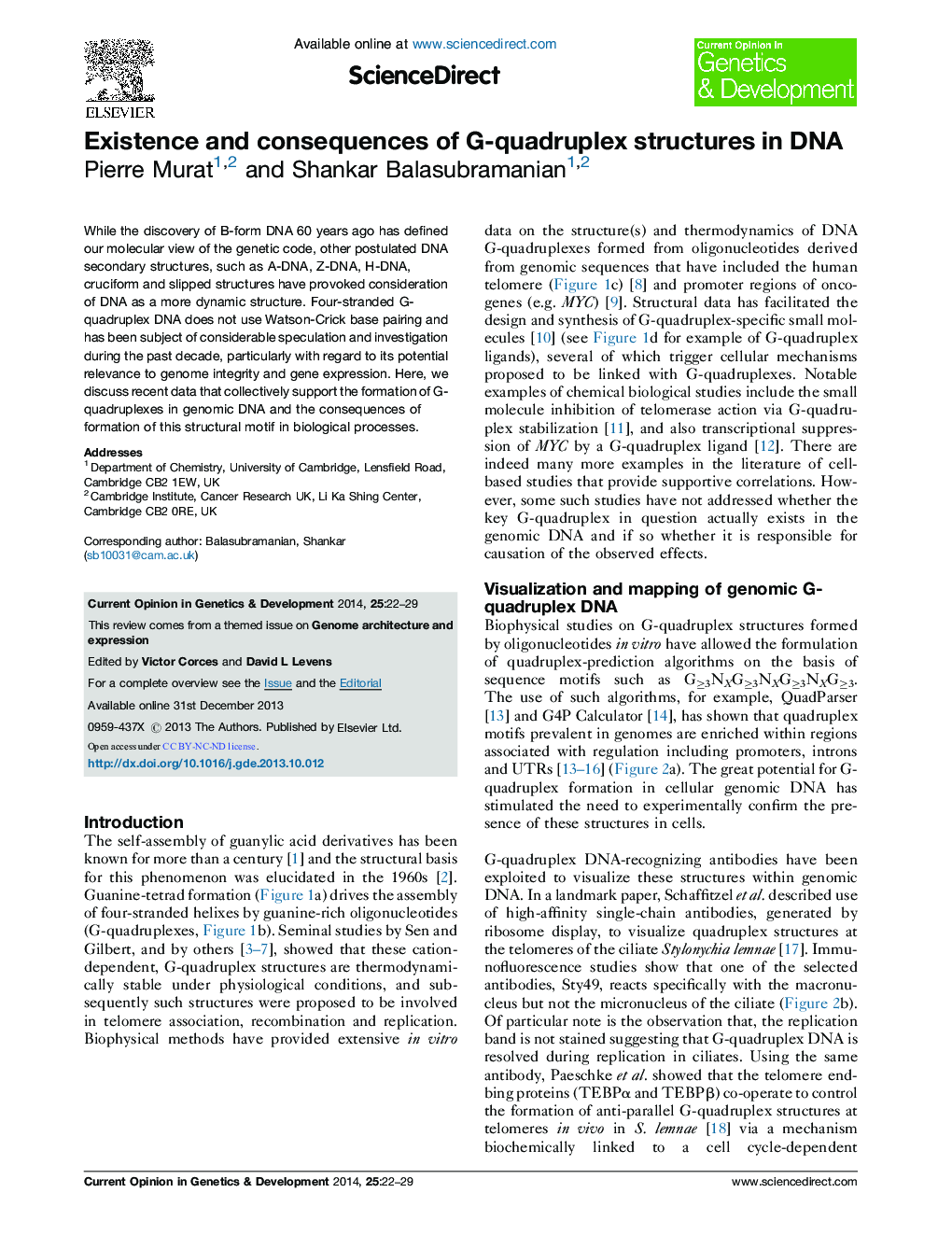| Article ID | Journal | Published Year | Pages | File Type |
|---|---|---|---|---|
| 5893538 | Current Opinion in Genetics & Development | 2014 | 8 Pages |
Abstract
While the discovery of B-form DNA 60 years ago has defined our molecular view of the genetic code, other postulated DNA secondary structures, such as A-DNA, Z-DNA, H-DNA, cruciform and slipped structures have provoked consideration of DNA as a more dynamic structure. Four-stranded G-quadruplex DNA does not use Watson-Crick base pairing and has been subject of considerable speculation and investigation during the past decade, particularly with regard to its potential relevance to genome integrity and gene expression. Here, we discuss recent data that collectively support the formation of G-quadruplexes in genomic DNA and the consequences of formation of this structural motif in biological processes.
Related Topics
Life Sciences
Biochemistry, Genetics and Molecular Biology
Developmental Biology
Authors
Pierre Murat, Shankar Balasubramanian,
